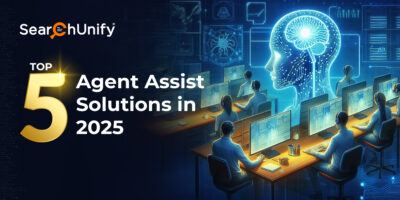
The advent of generative AI and large language models (LLMs) has ushered in a new era of possibilities for businesses. While early applications focused on content creation and automation, a more profound shift is underway: the rise of Agentic AI. This evolution moves beyond LLMs as passive tools towards a future where AI systems act as proactive agents, driving intelligent actions and reshaping the way enterprises operate.
The Three Pillars of Agentic AI
A recent Forrester analysis highlighted three interconnected developments at the forefront of this GenAI revolution, fueled by the exponential growth of data and the increasing sophistication of LLMs:
- AI Ops: Managing and optimizing complex AI systems at scale is crucial. AI Ops leverages AI itself to automate tasks like model monitoring, performance optimization, and anomaly detection, ensuring the reliability and scalability of AI-driven solutions.
- High-Performance IT: As AI adoption expands, traditional IT infrastructure struggles to keep pace. High-performance IT focuses on building agile, scalable, and AI-ready infrastructure that can handle the demands of real-time data processing, complex model training, and seamless AI integration across business operations.
- AI Computing: This represents the most transformative shift—a future where the lines between human and computer interaction blur. AI Computing will be defined by intuitive interfaces, natural language interactions, and AI agents that proactively anticipate needs, recommend actions, and even execute tasks autonomously, within defined parameters.
Key Learnings from the Front Lines of GenAI Adoption
The first year of widespread generative AI adoption has yielded valuable lessons:
- Accuracy is Up: The accuracy of LLM outputs has significantly improved, reaching an impressive 80% in many cases.
- Democratization of Innovation: Generative AI empowers individuals across various departments to experiment and contribute to innovation, breaking down traditional silos.
- Experimentation is Key: The low cost of building and deploying LLM-powered solutions encourages experimentation. Companies are running multiple pilots to identify high-impact use cases.
- Agility Over Perfection: The rapid pace of AI evolution demands agility. Waiting for the “perfect” solution can be detrimental. Embrace an iterative approach, starting with pilot projects and scaling successes.
- Executive Buy-In: Generative AI has garnered unprecedented support from leadership, facilitating alignment and resource allocation for AI initiatives.
The Power and Potential of AI Computing
To understand the transformative potential of AI Computing, consider this: Enterprises currently leverage only about 16-20% of their total knowledge assets. This “explicit” knowledge resides in structured formats like documents, databases, and knowledge bases.
The remaining 80-84% is tacit knowledge—undocumented, often residing in the minds of employees as expertise, experience, and intuition. Unlocking this vast reservoir of knowledge is the key to unlocking unprecedented value.
Addressing the Challenges of Knowledge Management
Traditional knowledge management systems struggle to:
- Unlock Tacit Knowledge: Capturing and codifying the intangible expertise of individuals remains a significant challenge.
- Ensure Findability: Moving beyond simple keyword search to enable dynamic discovery of relevant information is crucial.
- Maintain Relevance: Information quickly becomes outdated. Systems must adapt and surface the most up-to-date knowledge.
- Facilitate Retention: How do we ensure that valuable knowledge is retained within the organization, even as employees transition roles or leave the company?
- Promote Seamless Sharing: Breaking down silos and enabling effortless knowledge sharing across teams and departments is essential.
The Role of AI Computing in Empowering Knowledge Workers
AI Computing, powered by LLMs, offers a compelling solution to these challenges:
- Capturing Tacit Knowledge: LLMs can analyze unstructured data sources like emails, chat logs, and meeting transcripts to identify patterns, extract insights, and even generate knowledge-based articles based on the collective wisdom of an organization.
- Transforming Search and Discovery: AI-powered search engines go beyond keyword matching, understanding the context and intent behind user queries to surface the most relevant information.
- Content Curation and Personalization: LLMs can personalize the information presented to each user based on their role, expertise, and past interactions.
- Knowledge Retention and Continuity: By capturing and codifying knowledge, AI systems can ensure continuity, even as team members change roles or depart the organization.
High-Performance IT: The Foundation for Success
Realizing the full potential of AI Computing requires a robust IT infrastructure. Forrester highlights key areas for improvement:
- Interconnectivity: Breaking down data silos by connecting disparate systems is essential for a holistic view of enterprise knowledge.
- Data Quality: Addressing data quality issues is crucial for training accurate and reliable AI models.
- Tacit Knowledge Integration: Developing strategies and technologies to unlock and leverage tacit knowledge is paramount.

The Future of Business: Driven by Agentic AI
The rise of Agentic AI, fueled by LLMs and enabled by high-performance IT, has the potential to reshape the enterprise in profound ways:
- Data-Driven Decision-Making: AI agents will provide real-time insights, predictive analytics, and data-driven recommendations, empowering leaders to make more informed and strategic decisions.
- Hyper-Personalized Customer Experiences: AI will enable businesses to deliver hyper-personalized experiences at scale, tailoring every interaction to individual customer needs and preferences.
- Enhanced Employee Productivity and Innovation: By automating routine tasks and providing intelligent assistance, Agentic AI will free up employees to focus on higher-value activities that drive innovation and business growth.
- Agile and Adaptive Operations: AI will enable businesses to become more agile and responsive to change, adapting to market dynamics and customer needs in real time.
Conclusion
The journey towards Agentic AI is well underway. As LLMs continue to evolve, and as businesses invest in high-performance IT infrastructure, we can expect to see a rapid acceleration in the development and deployment of AI agents that redefine the way we work and interact with technology.
The companies that embrace this transformation, focusing on human-AI collaboration and a commitment to ethical AI development, will be the ones that unlock the true potential of this transformative technology and lead the way into the next era of business innovation.











